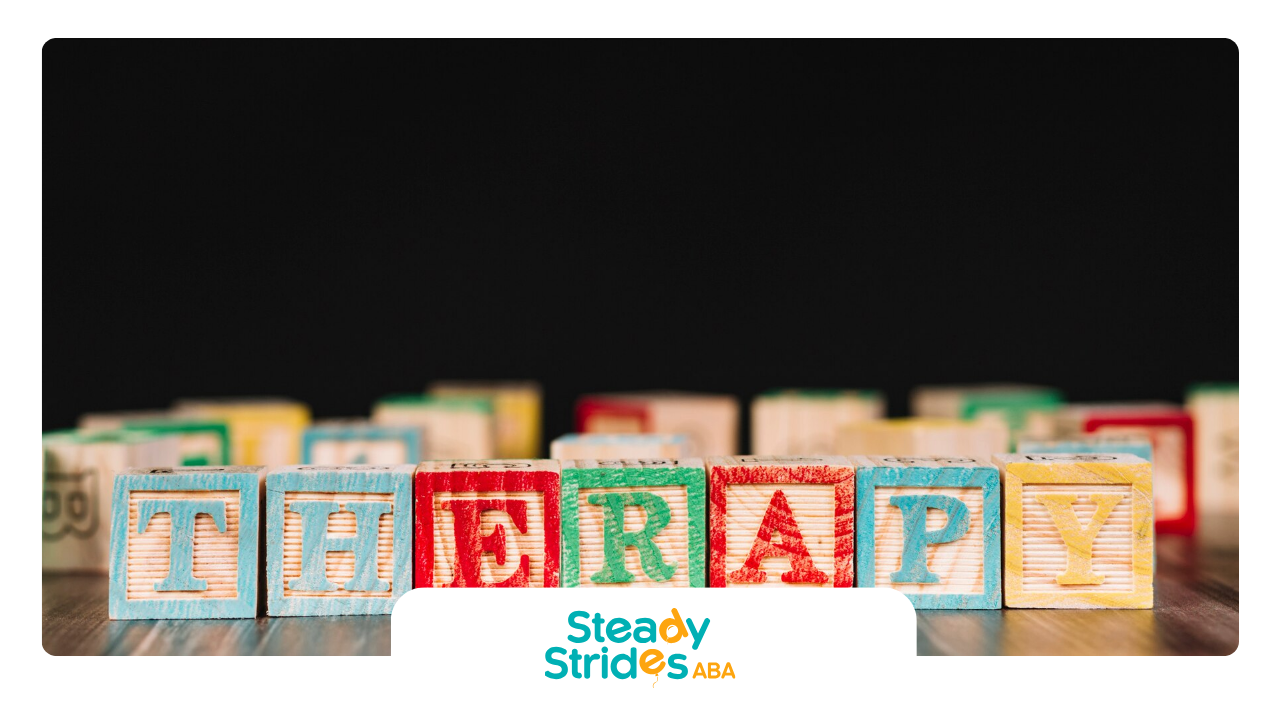Creating a conducive environment for in-home ABA therapy is crucial for optimal results. By carefully preparing your home, you can enhance the effectiveness of the therapy sessions and create a comfortable space for your child and the therapist. This guide will provide practical tips to optimize your home for ABA therapy.
Let's explore how to do ABA therapy at home by transforming your home into a supportive learning environment.
How to Prepare Home for In-Home ABA Therapy?
Preparing a home for in-home ABA therapy involves several essential steps. Understanding the importance of this therapy and selecting the right provider can greatly enhance the effectiveness of the sessions.
Importance of In-Home ABA Therapy
In-home ABA therapy can help children with autism learn essential skills for a fulfilling life and reduce problematic behaviors. One significant advantage of this approach is the comfort and safety it offers, allowing the child to remain in a familiar environment. This familiarity can significantly reduce anxiety and stress, which may arise from unfamiliar settings.
The benefits of in-home ABA therapy include:
- Personalized Treatment: Tailored to the individual's unique needs, ensuring more effective interventions.
- Comfort and Familiarity: The child learns in a safe space, enhancing engagement and participation.
- Convenience: Eliminates travel to therapy centers, saving time for families.
- Natural Environment Observations: Therapists can gain insights into daily routines and behaviors, leading to better-targeted strategies.
- Family Involvement: Do parents need to be present for ABA therapy? It is not required but encouraged. Because parents who observe and participate in sessions can enhance the support system for the child.
In-home therapy provides a safe and comfortable space for individuals to grow and learn, making it easier to tailor interventions to fit the unique needs of the child and family. The presence of family members during these sessions can also increase the likelihood of positive outcomes.
Selecting a Reputable Provider
Choosing a qualified and reputable provider is critical for successful in-home ABA therapy. Parents should consider the following factors when selecting a therapist:
- Credentials: Verify that the therapist is certified and trained in ABA principles.
- Experience: Look for providers with experience working with children with similar needs.
- Approach: Ensure the therapist uses evidence-based practices tailored to the child's unique requirements.
- Communication: Choose a therapist who maintains open communication with parents and involves them in the process.
- Reviews: Research testimonials or reviews from other families to gauge the provider's effectiveness.
By carefully considering these factors, parents can find a provider who aligns closely with their child's needs, ensuring a better therapeutic experience. This initial step is crucial for setting the foundation for effective ABA therapy in the home setting.
Preparing the Home Environment
Creating an optimal environment for in-home ABA therapy is essential for enhancing the effectiveness of the sessions. This involves designating a therapy space and involving siblings or friends to foster a collaborative atmosphere.
Designating a Therapy Space
Establishing a dedicated area in the home specifically for ABA therapy is crucial. This space should be comforting for the child with autism and practical for therapeutic activities. It is important to ensure that the environment is free of distractions and clutter, allowing the therapist to conduct sessions efficiently.
Key elements to consider when designating a therapy space include:
| Consideration | Description |
|---|---|
| Cleanliness | Ensure the area is free from debris, dust, or food residue. A clean environment promotes focus and engagement. |
| Flat Surface | Provide a clean, flat area such as a desk, table, or the floor for various activities and games that therapists may use. |
| Necessary Materials | Equip the space with any tools or materials the therapist may require for effective sessions. |
By establishing a well-organized therapy space, parents can facilitate a supportive environment that enhances learning and comfort during ABA sessions.
Involving Siblings or Friends
Involving siblings or friends can significantly benefit the therapy experience. Encouraging participation from family members or peers promotes social interaction and can help the child with autism feel more at ease. It can also foster a sense of teamwork, making the child feel supported and understood.
Here are ways to involve siblings or friends in the therapy process:
| Strategy | Description |
|---|---|
| Create Activities | Plan fun, engaging activities that can be enjoyed together, reinforcing the skills learned during therapy. |
| Encourage Participation | Allow siblings or friends to join in on sessions, making them feel included and helping to strengthen relationships. |
| Educate Family Members | Discuss the goals of ABA therapy with siblings and friends so they understand the importance of their involvement and can support the child's progress. |
By actively involving siblings or friends in the therapy process, parents can create a more dynamic and encouraging atmosphere. This collaborative effort can enhance the overall effectiveness of ABA therapy and promote lasting connections among family members.
Communication and Coordination
Effective communication and coordination are essential steps in preparing the home for ABA therapy. Parents should actively engage with therapists to ensure the therapy is tailored to meet their child's individual needs.
Discussing the Child's Needs with the Therapist
Before the therapist arrives, it is beneficial to have a detailed conversation about the child's needs, strengths, and therapy goals. This discussion can help to customize the therapy approach, ensuring it aligns with the child's specific requirements.
By sharing insights about the child's behavior and preferences, parents can enhance their understanding of the therapy process, leading to more effective outcomes.
| Discussion Point | Description |
|---|---|
| Child's Strengths | Highlight areas where the child excels or shows interest. |
| Specific Challenges | Discuss behaviors or situations that require intervention. |
| Therapy Goals | Define clear and achievable goals for the therapy sessions. |
| Desired Outcomes | Share what parents hope to see as a result of the therapy. |
Establishing a Therapy Schedule
Creating a consistent therapy schedule is crucial for the effectiveness of ABA therapy. Parents should collaborate with the therapist to establish a timetable that accommodates both parties, considering any other commitments. A well-structured schedule ensures that therapy sessions occur regularly, reinforcing the skills being taught and promoting progress.
Example of a Therapy Schedule:
| Day of the Week | Time | Session Duration | Notes |
|---|---|---|---|
| Monday | 3:00 PM | 1 hour | Focus on social skills |
| Wednesday | 3:00 PM | 1 hour | Communication strategies |
| Friday | 3:00 PM | 1 hour | Behavioral interventions |
Maintaining a consistent schedule is key to maximizing the benefits of therapy. This structure allows for the generalization of learned skills, creating a cohesive approach that enhances the child's progress both in therapy and at home.
Creating a Supportive Atmosphere
Establishing a supportive atmosphere is crucial when preparing a home for in-home ABA therapy. This environment should reflect the principles of ABA and cater to the needs of the child undergoing therapy.
Setting Clear Household Rules
Communicating clear rules and expectations to all household members involved in the therapy can help maintain a positive and productive therapy environment. This includes outlining behaviors that are encouraged and those that are discouraged. Clear rules not only help in creating structure but also provide consistency, which is essential for effective ABA therapy.
| Rule Category | Examples |
|---|---|
| Behavior Expectations | “Use a calm voice when speaking.” “Wait for your turn to speak.” |
| Therapy Participation | “Respect the therapist's instructions.” “Stay engaged with the activities.” |
| Sibling Involvement | “Support each other during therapy.” “Take turns playing with toys.” |
This table summarizes potential household rules that can support the therapy process.
Providing Engaging Activities
Having your child's favorite toys and activities available during therapy sessions can help keep the child engaged and motivated, thus maximizing the benefits of the therapy. Engaging in activities not only promotes participation but also facilitates learning through play, which is a core component of ABA therapy.
| Activity Type | Examples | Purpose |
|---|---|---|
| Sensory Play | Playdough, water beads | Encourages fine motor skills and creativity |
| Educational Games | Puzzles, matching cards | Promotes cognitive development and problem-solving |
| Movement Activities | Obstacle courses, dancing | Supports physical activity and coordination |
This table presents examples of engaging activities that can be integrated into therapy sessions.
Establishing a supportive atmosphere involves clear communication of household rules and providing engaging activities that resonate with the child's interests. These steps can foster a conducive environment for effective ABA therapy at home.
Enhancing Family Involvement
When preparing the home for ABA therapy, family involvement is vital for maximizing the effectiveness of the sessions. Understanding ABA principles and leveraging technology can greatly enhance this involvement.
Understanding ABA Principles
ABA (Applied Behavior Analysis) therapy is built upon several core principles that are crucial for both caregivers and participants to grasp. These principles include positive reinforcement, prompting, shaping, and generalization. Familiarity with these concepts helps family members support the child's learning and behavioral goals effectively.
| ABA Principle | Description |
|---|---|
| Positive Reinforcement | Rewarding desired behaviors to encourage their repetition. |
| Prompting | Providing cues or hints to help the child perform a task. |
| Shaping | Gradually guiding the child towards the desired behavior through small steps. |
| Generalization | Applying learned skills in different situations or settings. |
Leveraging Technology
Technology can serve as a powerful ally in ABA therapy at home. Various resources, such as ABA therapy apps and tools, can supplement in-home interventions. These tools can offer structured activities, track progress, and maintain engagement during sessions. Additionally, virtual sessions and telehealth options can provide flexibility and continuity in therapy when in-person visits are not possible.
| Technology Resource | Benefits |
|---|---|
| ABA Therapy Apps | Structured activities and tracking progress. |
| Virtual Sessions | Flexibility and continuity in therapy. |
| Telehealth Options | Accessibility for families unable to attend in-person. |
By understanding the principles of ABA and utilizing technology, families can create a supportive environment that enhances the effectiveness of in-home ABA therapy.
Cultural Considerations
Addressing Diversity in ABA Therapy
Culturally and linguistically diverse (CLD) families represent a significant and growing segment of the U.S. population. Currently, 13.4% of individuals are first-generation immigrants who often communicate in a language other than English. This diversity should be taken into account when preparing for in-home ABA therapy, as it can influence how therapy is delivered and received.
A survey of ABA practitioners revealed that 57% reported that more than half of their clients come from diverse backgrounds. However, many practitioners lack training specific to diversity. Latino families, in particular, have expressed a need for more linguistically adapted and culturally sensitive ABA practices. They often report higher levels of difficulty in establishing trust with providers compared to non-Latino White parents.
Barriers to effective therapy can be exacerbated by time pressures, parental exhaustion, and perceived inflexibility in ABA methods. An ethnographic study on Latino families in Los Angeles highlighted challenges such as the lack of adaptation to family needs and difficulties in managing child distress during sessions.
The Behavior Analyst Certification Board (BACB) Code emphasizes the importance of considering cultural factors in service delivery. Behavior analysts are encouraged to involve families in treatment planning and to tailor treatment plans to meet the unique needs of clients. Recognizing and accounting for cultural and linguistic needs is essential for providing effective and ethical ABA services, particularly for families from minority backgrounds.
Importance of Bilingualism
Bilingualism plays a crucial role in the development of children with Autism Spectrum Disorder (ASD). Research indicates that being bilingual does not confuse these children or delay their overall development. On the contrary, bilingualism is believed to enhance cognitive flexibility, social skills, and executive function.
For bilingual children with disabilities, providing quality language input in their home language is vital. Interventions that are initially delivered in the child’s native language tend to be more effective and beneficial. This approach not only supports language development but also fosters a stronger connection between the child and their cultural identity.
By addressing cultural considerations and the importance of bilingualism, parents can create a more inclusive and supportive environment for in-home ABA therapy, ensuring that their child's unique needs are met effectively.
Conclusion
Creating a conducive home environment for in-home ABA therapy is essential for maximizing its effectiveness. By following these tips and establishing a dedicated therapy space, you can optimize your child's learning experience. Remember, consistency and patience are key to achieving positive outcomes.
Steady Strides ABA is committed to providing exceptional in-home ABA therapy services in Texas. Our experienced therapists collaborate closely with families to create a supportive and engaging learning environment. With a focus on individualized treatment plans and measurable outcomes, we empower children with autism to reach their full potential. Contact Steady Strides ABA today to learn more about our best ABA therapy services and how we can support your child's journey.












